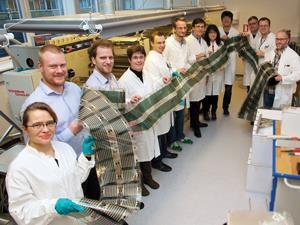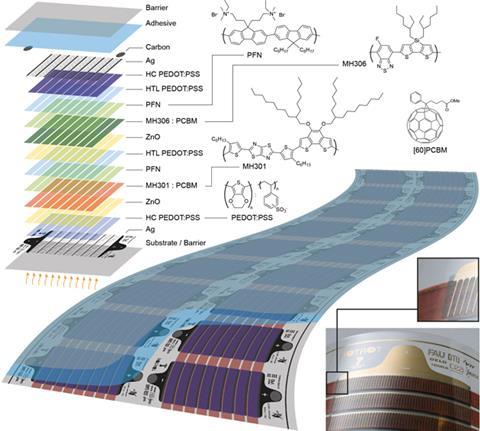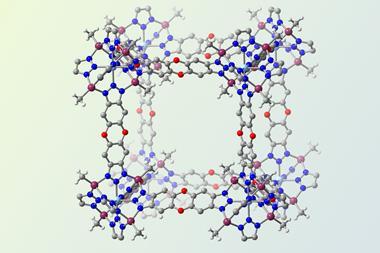Complete roll-to-roll processing of flexible organic tandem solar cells achieved for the first time

In an impressive feat of engineering, scientists in Denmark have devised a rapid, scalable and industrially viable way to manufacture large sheets of flexible organic tandem solar cells. Their successful application of roll-to-roll processing is a significant achievement for this emerging renewable technology.
An organic photovoltaic (OPV) solar cell is a polymer-based thin film solar cell. OPV solar cells have been the focus of much research as they are lightweight, flexible, inexpensive, highly tuneable and potentially disposable. They are also unparalleled in the number of times that they can pay back the energy used in their manufacture.
In the quest to improve the efficiency of OPVs, which, in addition to operational lifetime, is currently their key limitation, various new materials, processing methods and device architectures have been investigated. Among these is the tandem cell, where multiple junctions are stacked upon one another. This can increase the efficiency of the cell by not only increasing the number of junctions, but, along with careful selection of complimentary materials, can make it possible to harvest photons from a broader region of the spectrum. However, this more complicated architecture renders their manufacture significantly more challenging.
Frederik Krebs and his research team at the Technical University of Denmark are specialists in renewable energy technologies, particularly OPVs. For the first time they have demonstrated the successful roll-to-roll manufacture of tandem OPV modules, each comprised of a stack of 14 discrete layers, which are rapidly printed, coated or deposited one on top of another by a machine reminiscent of a printing press. The experiment was carried out in simple conditions and is extremely fast, with a single solar cell module being printed onto blank foil each second. Most importantly, the process is relatively cheap and completely scalable, with a high technical yield.

‘If I have made a kilometre of solar cells, then I am not interested if one module has an efficiency of 10% and the rest are 2% – I think what is important is what you can make for the public,’ says Krebs. ‘I am the guy that makes a lot of it and tries to look for the average and what is practical, and then there are the other guys that look at what is obtainable. Everybody has their role to play and hopefully we will meet some day, probably somewhere in the middle.’
‘The performance from these scalably fabricated devices has a long way to go to achieve commercial viability,’ states Seth Darling, an expert in solar energy conversion at Argonne National Laboratory, US, ‘but this work clearly shows that the process itself is feasible and has the potential for genuine market impact.’
The future direction of this research now lies in materials development, and in the optimisation of each layer for the manufacturing process.
References
This paper is free to access until 31 July 2014. Download it here:
T R Andersen et al, Energy Environ. Sci., 2014, DOI: 10.1039/c4ee01223b












No comments yet